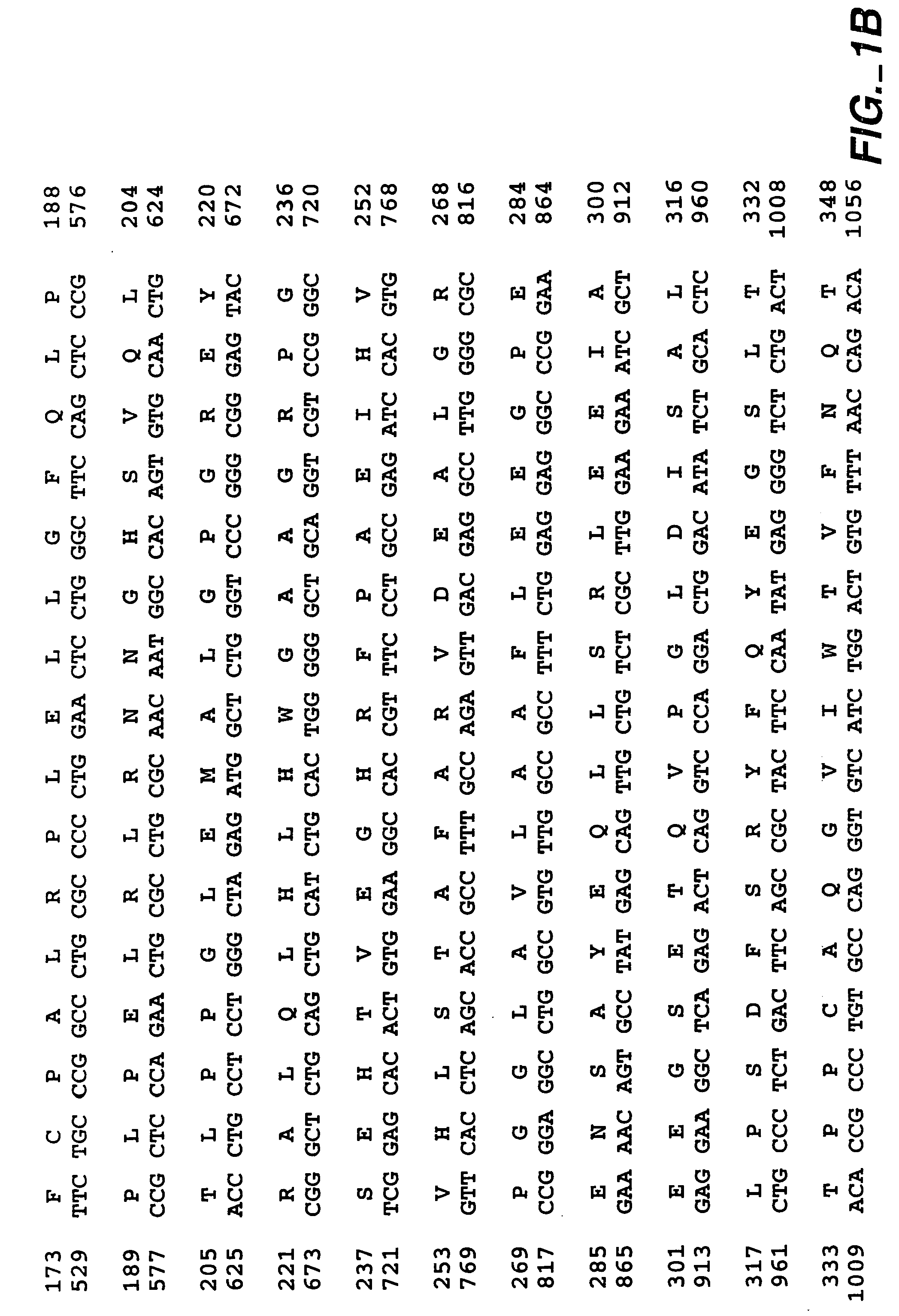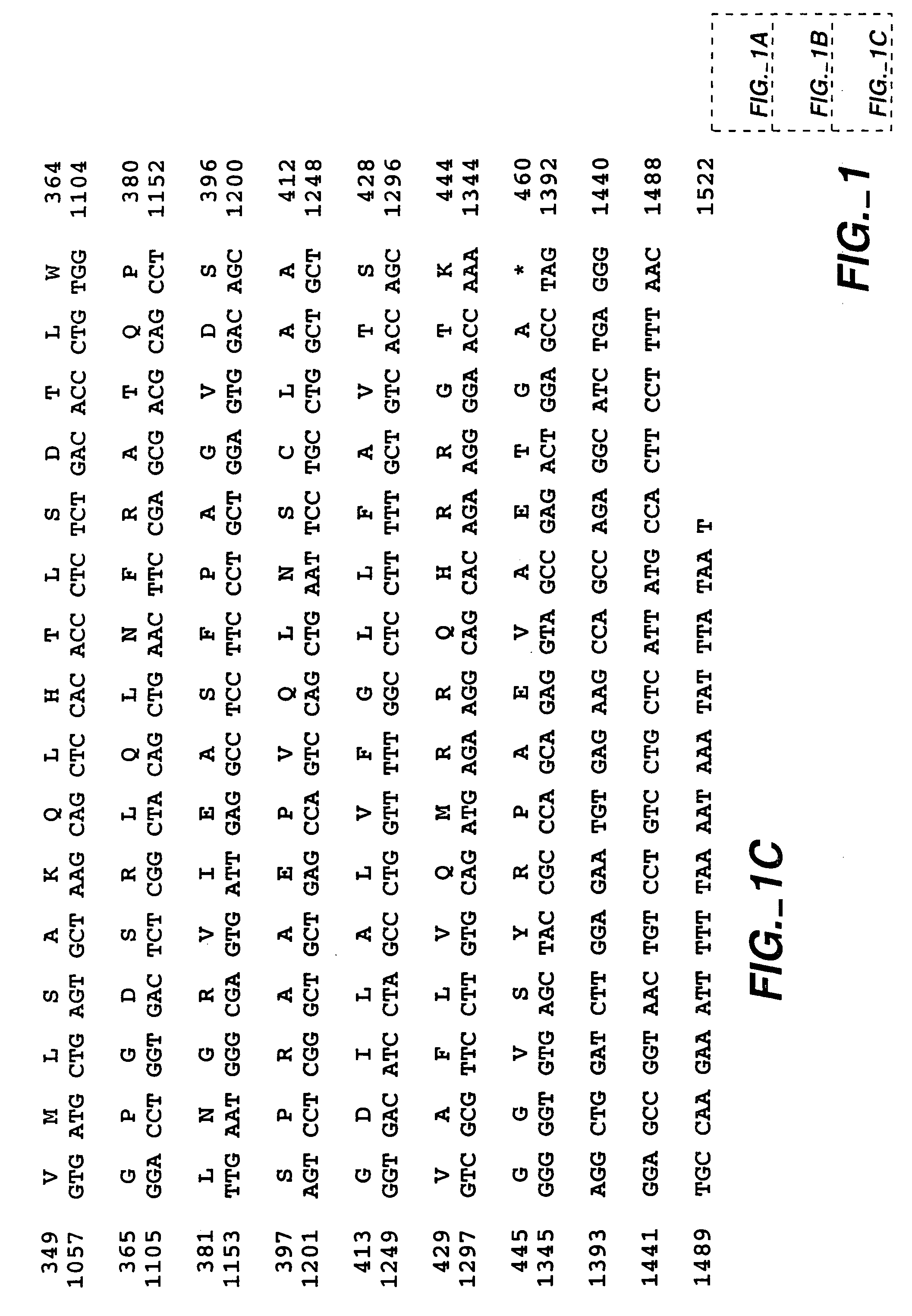MN and hypoxia
- Summary
- Abstract
- Description
- Claims
- Application Information
AI Technical Summary
Benefits of technology
Problems solved by technology
Method used
Image
Examples
example 1
Oxygen-Dependent Function of MN / CA9 Promoter
[0460] To investigate the unusually tight regulation of MN / CA9 mRNA by hypoxia, the oxygen-dependent function of the MN / CA9 promoter was tested. In the first set of experiments, luciferase reporter genes containing ˜0.5 kb of MN / CA9 5′ flanking sequences (−506 to +43) [SEQ ID NO: 104] and a deletion to nucleotide −173 (−173 to +43) [SEQ ID NO: 111] were tested in transiently transfected HeLa cells. Both constructs showed very low levels of activity in normoxic cells but were induced strongly by hypoxia. By contrast, a similar reporter linked to a minimal SV40 promoter showed no induction by hypoxia.
example 2
Dependence of MN / CA9 Promoter on HIF-1
[0461] To test whether these responses were dependent on HIF-1, further transfections were performed using a CHO mutant cell (Ka13) that is functionally defective for the HIF-1α subunit and cannot form the HIF-1 transcriptional complex. [Wood et al., “Selection and analysis of a mutant cell line defective in the hypoxia-inducible factor-1α subunit (HIF-1α),”J. Biol. Chem., 273: 8360-8368 (1998).] In the CHO wild-type parental subline C4.5, the −173 nucleotide promoter [SEQ ID NO: 111] conferred 17-fold transcriptional induction by hypoxia. In contrast, in the HIF-1α-deficient Ka13 subline, this hypoxic induction was absent. Cotransfection of human HIF-1α restored hypoxia-inducible activity to the MN / CA9 promoter in the Ka13 cells and increased normoxic activity in both C4.5 and Ka13. In C4.5 and Ka13 cells at 0.1% O2, luciferase expression was increased 1.6- and 17-fold, respectively, by cotransfection of human HIF-1α Thus, hypoxia-inducible ac...
example 3
Response of Putative MN / CA9 HRE to Hypoxia
[0462] Inspection of the MN / CA9 5′ flanking sequences revealed a consensus HRE beginning 3 bp 5′ to the transriptional start site, oriented on the antisense strand, reading 5′-TACGTGCA-3′ [SEQ ID NO: 105]. To test the importance of this site, a MN / CA9 minimal promoter was constructed containing this sequence (−36 to +14) [SEQ ID NO: 106]. This minimal promoter retained hypoxia-inducible activity in C4.5 cells but had no inducible activity in Ka13 cells. Absolute levels of activity were lower in comparison to the −173 nucleotide promoter [SEQ ID NO: 111] construct, being reduced −8 fold, indicating that although sequences −173 to −36 amplified promoter activity, responsiveness to hypoxia was conveyed by the minimal sequence containing the MN / CA9 HRE.
PUM
 Login to View More
Login to View More Abstract
Description
Claims
Application Information
 Login to View More
Login to View More - R&D
- Intellectual Property
- Life Sciences
- Materials
- Tech Scout
- Unparalleled Data Quality
- Higher Quality Content
- 60% Fewer Hallucinations
Browse by: Latest US Patents, China's latest patents, Technical Efficacy Thesaurus, Application Domain, Technology Topic, Popular Technical Reports.
© 2025 PatSnap. All rights reserved.Legal|Privacy policy|Modern Slavery Act Transparency Statement|Sitemap|About US| Contact US: help@patsnap.com



